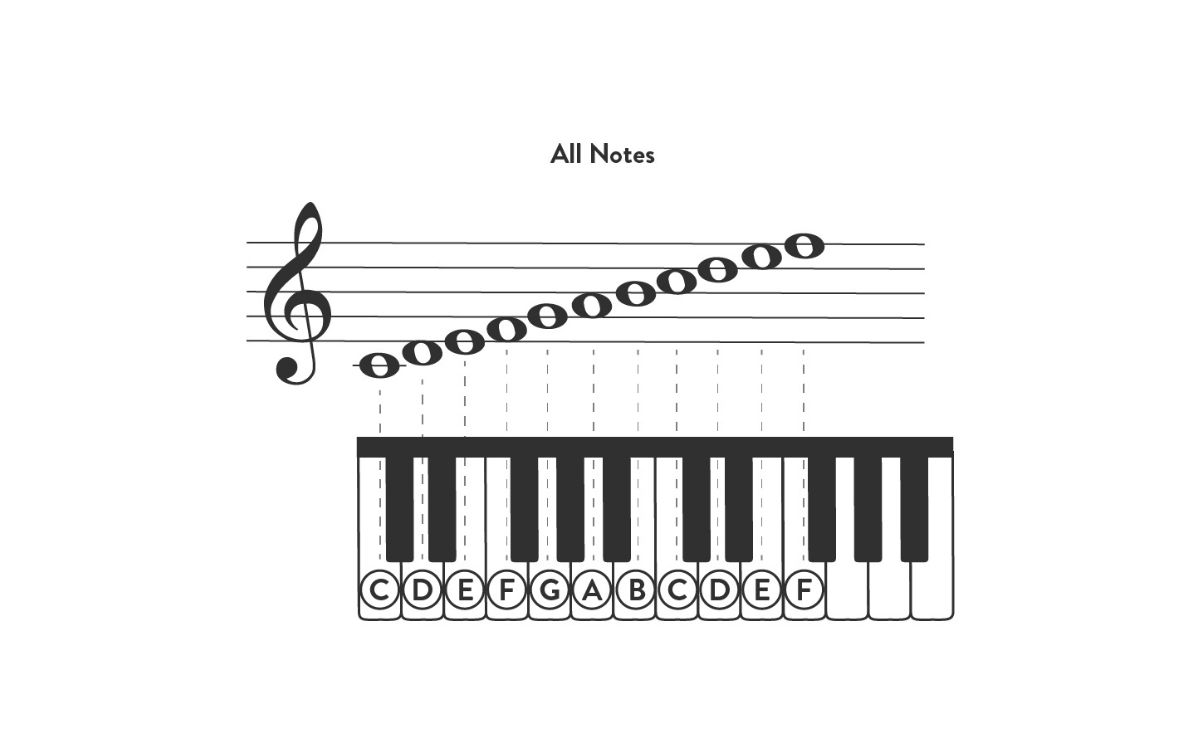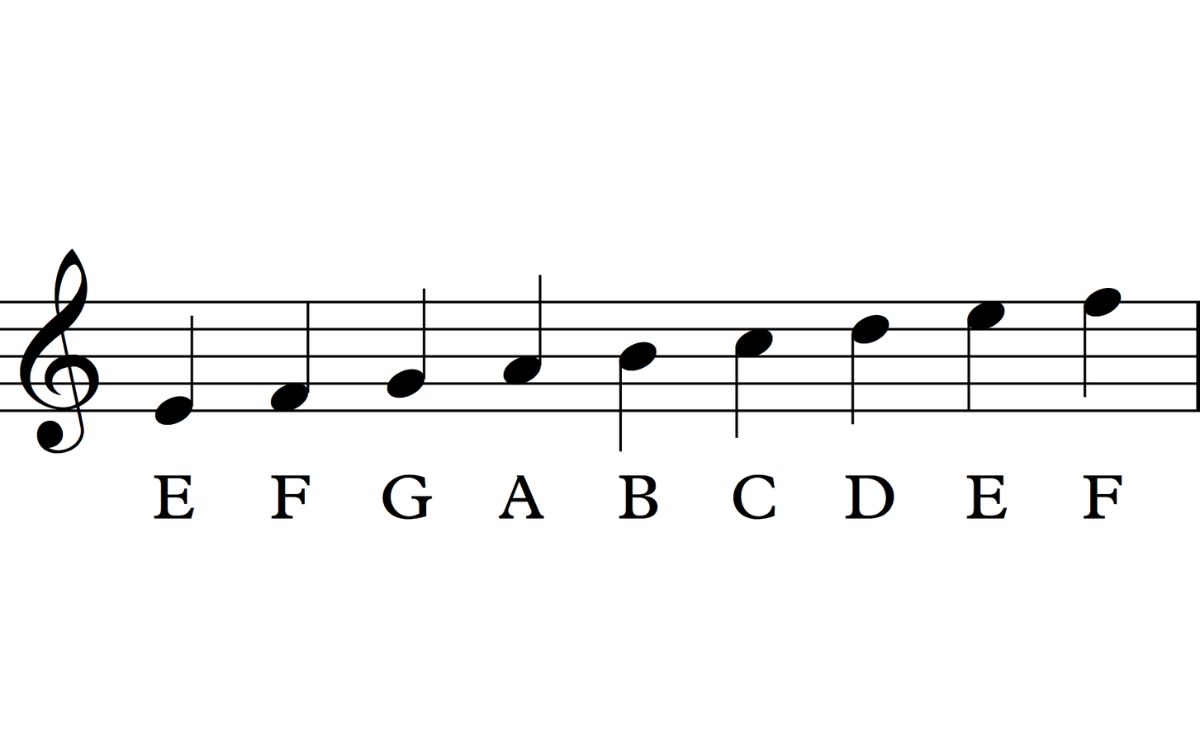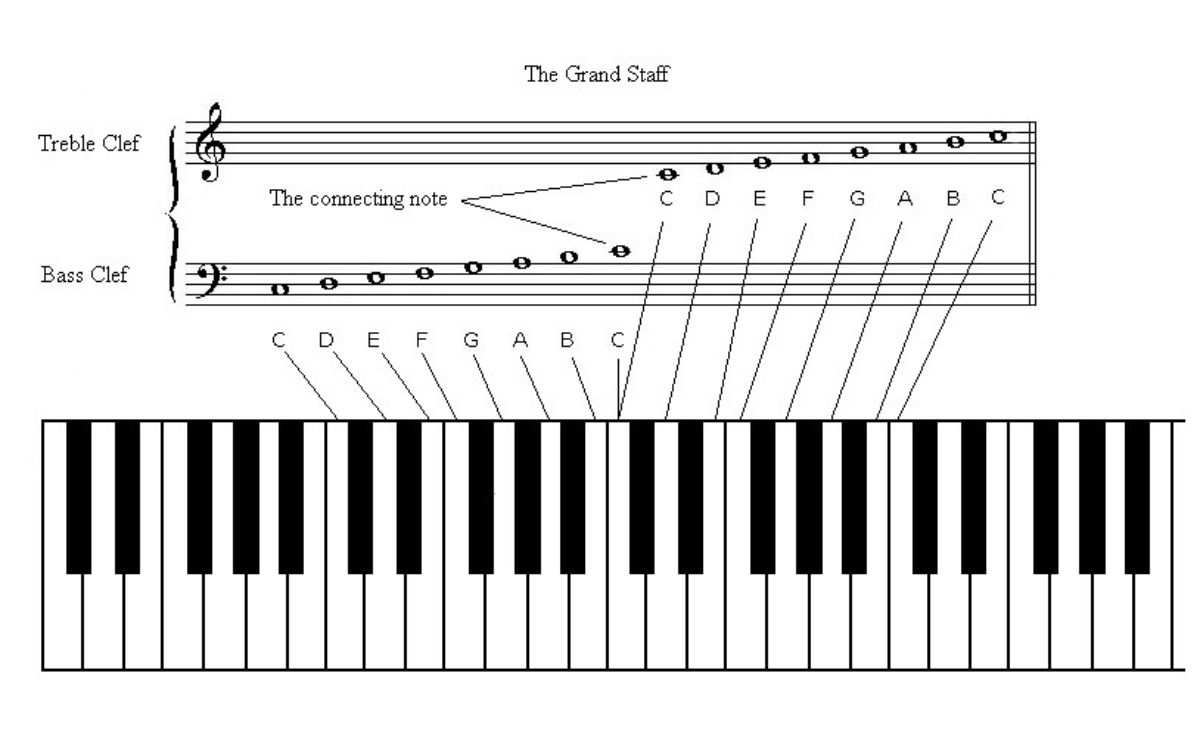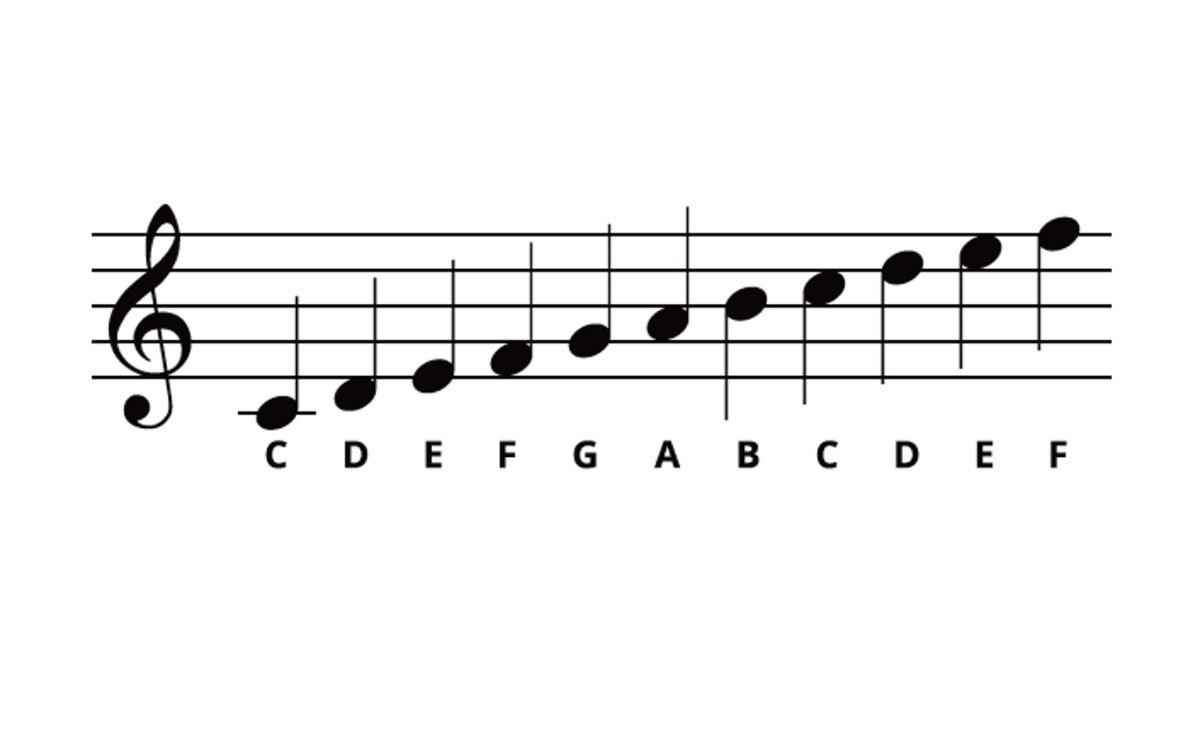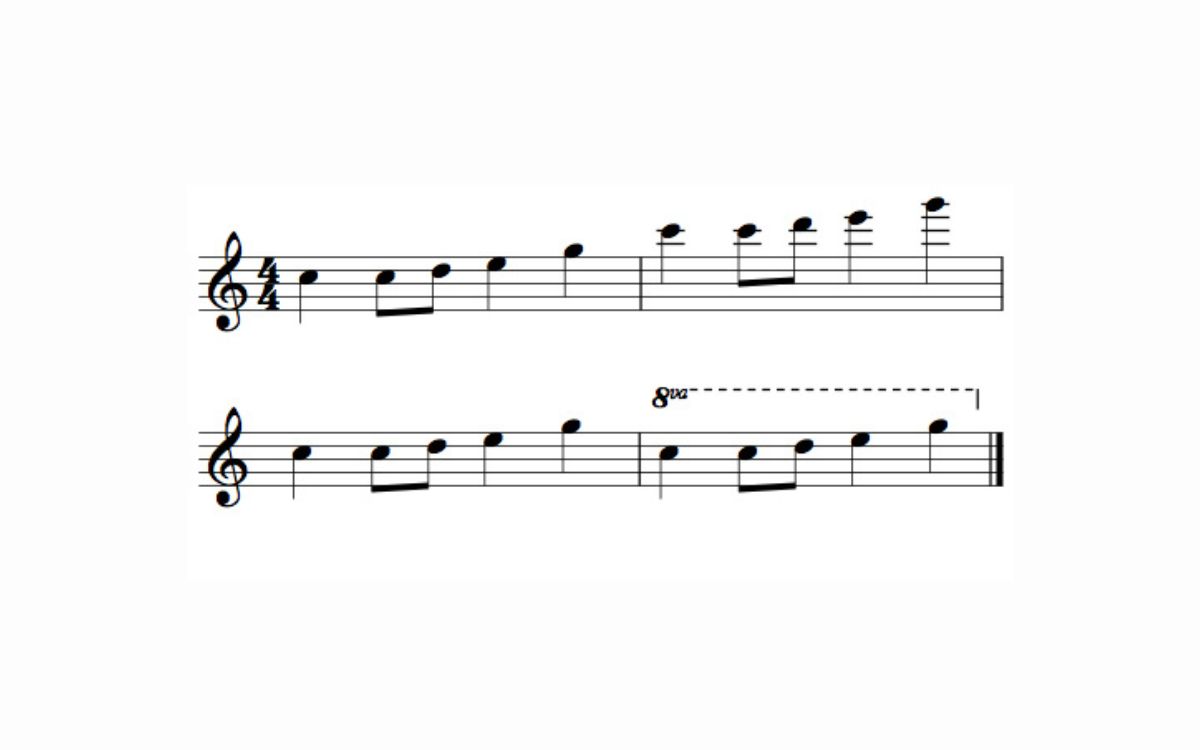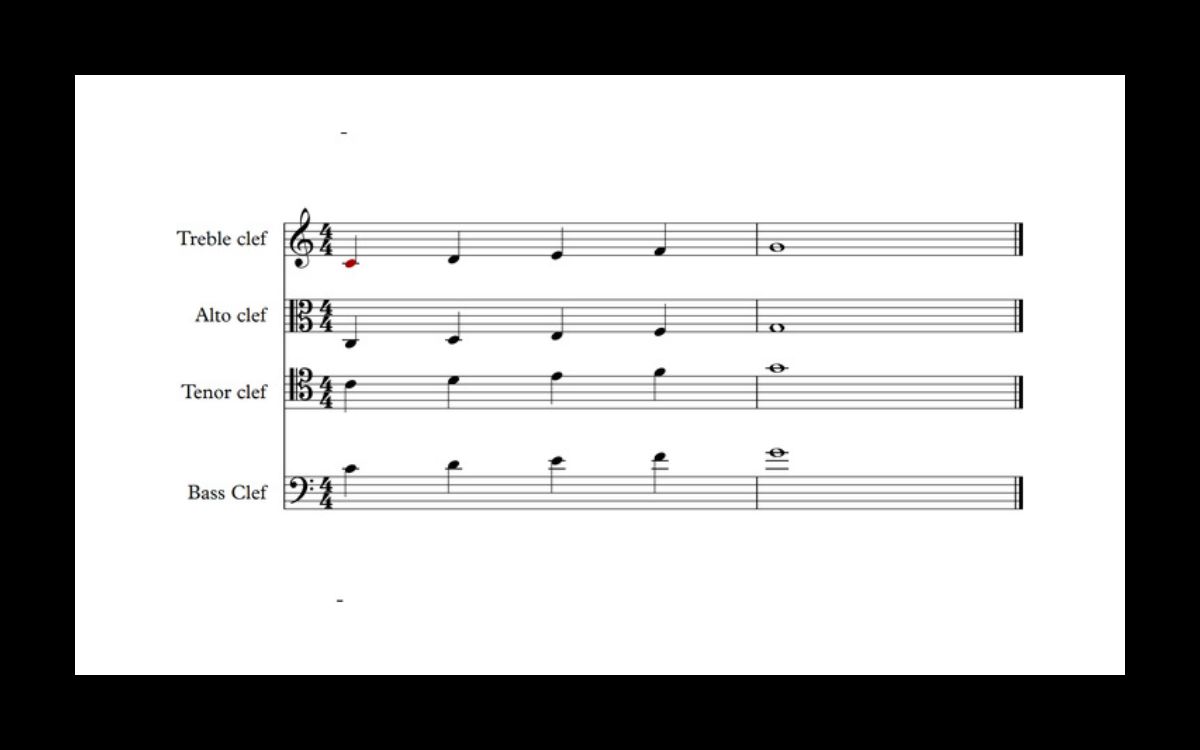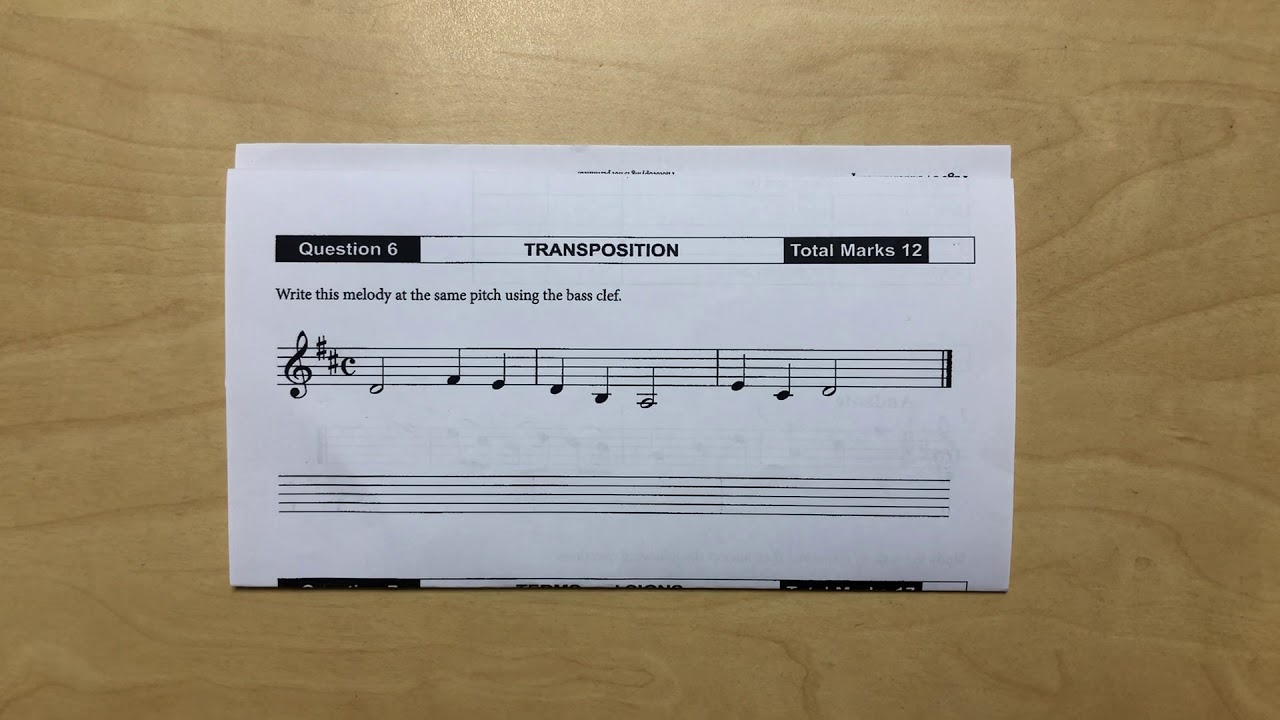Home>Production & Technology>Treble>What Note Does The Treble Clef Establish On The Staff?


Treble
What Note Does The Treble Clef Establish On The Staff?
Modified: January 22, 2024
Discover the role of the treble clef in establishing musical notes on the staff, providing clarity and guidance for higher pitched instruments.
(Many of the links in this article redirect to a specific reviewed product. Your purchase of these products through affiliate links helps to generate commission for AudioLover.com, at no extra cost. Learn more)
Table of Contents
Introduction
The treble clef is one of the most recognizable symbols in music notation. It is a vital component of sheet music, guiding musicians in determining pitch and note placement. In this article, we will delve into the world of the treble clef, exploring its role in music and the note it establishes on the staff.
Understanding the treble clef is essential for musicians, as it represents a specific range of notes on the musical staff. Whether you’re a seasoned musician or just starting your musical journey, having a solid understanding of the treble clef can greatly enhance your ability to read and interpret sheet music.
Throughout this article, we will not only uncover the note established by the treble clef but also explore the function and position of the treble clef on the staff. Additionally, we’ll discuss other notes represented by the treble clef, providing a comprehensive understanding of its significance in music notation.
So, let’s dive into the enchanting world of the treble clef and discover the note it establishes on the staff!
Understanding the Treble Clef
The treble clef, also known as the G clef, is a symbol used in music notation to represent a specific range of notes. Its distinctive spiral shape curls around the second line from the bottom of the staff, defining the pitch of the notes that fall within its range.
The treble clef is primarily used to notate higher-pitched instruments such as the violin, flute, trumpet, and female vocalists. It represents notes that are played in the upper register of these instruments, creating a bright and melodious sound.
One of the key aspects of understanding the treble clef is recognizing its position on the staff. The treble clef is positioned in such a way that the bottom curve of the spiral intersects with the second line from the bottom of the staff. This line is known as the G line, and it determines the note associated with the treble clef.
By establishing the G line as its starting point, the treble clef provides a crucial reference for note reading on the staff. The placement of other notes in relation to the G line helps musicians identify and play the correct pitches on their instrument.
As you may have guessed, the treble clef gets its alternative name, the G clef, from its association with the G line. Starting from the G line, each line and space on the staff represents a specific note in ascending order. This systematic approach allows musicians to navigate the musical notation with ease, ensuring accurate performance and interpretation.
Now that we have a general understanding of the treble clef, let’s explore its primary function and significance in music notation.
The Function of the Treble Clef
The treble clef serves a crucial function in music notation by assigning a specific range of notes to the staff. Its primary role is to indicate the higher-pitched notes that fall within its range, allowing musicians to read and interpret sheet music accurately.
When a piece of music is notated in the treble clef, it provides essential information about the intended pitch and tonality. By understanding the function of the treble clef, musicians can effectively translate the written music into sound.
One of the key functions of the treble clef is to establish a reference point for note reading. With the G line as its starting point, the treble clef allows musicians to identify the placement of other notes on the staff effortlessly. This reference point is crucial for maintaining consistency and accuracy in musical performance.
Moreover, the treble clef helps in differentiating between the various voices or instruments in an ensemble or orchestral setting. By assigning the treble clef to higher-pitched instruments, it ensures that their specific range is notated clearly, making it easier for each musician to follow their respective musical parts.
Additionally, the treble clef’s function extends beyond representing the pitch of individual notes. It also carries valuable information about dynamics, articulation, and expression. The placement of symbols and markings above or below the staff, in conjunction with the treble clef, conveys specific instructions to musicians regarding how to perform the music with the desired nuances and interpretation.
Without the treble clef, sheet music would lack clarity and precision, making it challenging for musicians to accurately read and interpret the intended musical ideas. By providing a designated range for higher-pitched notes, the treble clef plays a vital role in ensuring seamless communication between composers, arrangers, and performers.
Now that we have explored the function of the treble clef, let’s take a closer look at its position on the staff and the note it establishes.
Position of the Treble Clef on the Staff
The treble clef, also known as the G clef, is positioned on the staff in a specific location that establishes the note associated with it. Its placement provides a reference point for note reading and helps musicians identify the pitches of the notes represented by the treble clef.
The treble clef is positioned so that the bottom curve of its spiral intersects with the second line from the bottom of the staff. This line is known as the G line due to its association with the treble clef. It is from this line that the treble clef gets its alternative name, the G clef.
By establishing the G line as its starting point, the treble clef assigns the pitch G4, also known as the G above middle C, to that line on the staff. This means that any note placed on the G line will be played as a G4 pitch. This note serves as a critical anchor point for musicians, allowing them to orient themselves on the staff and identify other notes relative to the G line.
Moving from the G line, the treble clef continues to ascend through the higher pitches. Each line and space above the G line represents a specific note in ascending order, following the pattern of natural notes: G A B C D E F G, and so on.
In addition to the G line, the treble clef also provides reference points for other key notes on the staff. The spaces between the lines on the staff are likewise assigned specific notes, with the spaces immediately above and below the G line representing the notes F4 and A4, respectively.
The placement of the treble clef on the staff ensures that musicians can easily identify and play the higher-pitched notes indicated by the clef. It provides a clear visual cue, allowing for efficient reading and interpretation of sheet music.
Now that we understand the position of the treble clef on the staff and its association with the G line, let’s move on to exploring the specific note established by the treble clef.
The Note Established by the Treble Clef
The treble clef, as we mentioned earlier, is associated with the G line on the musical staff, hence its alternative name, the G clef. The note established by the treble clef is specifically G4, which is the G located above middle C on the piano.
The G4 pitch is a crucial reference point in the world of music. It serves as the starting point for the treble clef and provides a clear anchor for musicians to identify and relate other notes on the staff. Understanding the note established by the treble clef is essential for musicians to accurately read and play music notated with this clef.
The G4 pitch is known for its bright and vibrant sound quality. It is found in various musical compositions and is often associated with melodies that soar in the higher register. By establishing G4 as the note associated with the treble clef, composers and arrangers ensure that the music intended for higher-pitched instruments or vocalists is notated accurately.
It is important to note that while the treble clef primarily represents the G4 pitch, it does not limit the range of notes that can be played within its staff. The treble clef spans multiple octaves, making it suitable for a wide range of melodies and musical passages.
As musicians read and interpret music notated in the treble clef, they follow the placement of notes on the staff relative to the G4 note. The G line on the staff represents the G4 pitch, and ascending from there, each line and space corresponds to higher pitches such as A4, B4, C5, and so on.
By understanding the note established by the treble clef, musicians can confidently navigate and perform music written in this clef with accuracy and precision. The treble clef serves as a guide, guiding musicians to produce the correct pitches and create harmonious melodies.
Now that we know the note established by the treble clef, let’s delve into other notes represented by this clef.
Other Notes Represented by the Treble Clef
While the treble clef is primarily associated with the G4 note, it represents a wide range of other notes as well. As musicians read sheet music written in the treble clef, they encounter various pitches that span multiple octaves.
Ascending from the G4 pitch on the treble clef, each line and space on the staff represents a specific note in ascending order. Following the pattern of natural notes, starting from G4, the notes represented by the treble clef are G A B C D E F G, and so on.
It is important to note that the treble clef spans multiple octaves, allowing for a broad range of notes to be notated. The upper notes of the treble clef are often used to represent melodies played by instruments with a higher range, such as the violin, flute, or trumpet.
Furthermore, the treble clef can have ledger lines above and below the staff to accommodate notes that exceed the range of the staff. These ledger lines extend the staff, indicating higher or lower pitches that fall outside the normal range covered by the staff.
An understanding of the other notes represented by the treble clef is crucial for musicians to accurately read and perform music notated in this clef. It enables them to identify and play the correct pitches, creating melodies that are faithful to the composer’s intentions.
Learning to quickly recognize and associate the notes represented by the treble clef is an essential skill for any aspiring musician. By familiarizing themselves with the pitches and practicing reading sheet music, musicians can confidently navigate the treble clef and bring musical compositions to life.
Now that we have explored the other notes represented by the treble clef, let’s reflect on what we have learned about this fundamental element of music notation.
Conclusion
The treble clef is a vital element of music notation, representing a specific range of notes in higher pitches. Throughout this article, we have explored the various aspects of the treble clef, including its function, position on the staff, and the note it establishes.
We have learned that the treble clef serves as a reference point for note reading, allowing musicians to identify and play the correct pitches on their instruments. Its placement on the staff, specifically intersecting with the second line from the bottom, establishes the G4 note as the starting point for the treble clef.
While the treble clef primarily represents the G4 note, it also encompasses a wide range of other pitches, ascending through multiple octaves. By understanding the other notes represented by the treble clef, musicians can accurately interpret melodies notated in this clef, creating harmonious compositions.
The treble clef plays a crucial role in music notation, aiding musicians in reading and performing sheet music. It is not limited to specific instruments, as it can be used for various high-pitched instruments and female vocalists.
By having a solid understanding of the treble clef, musicians can confidently navigate sheet music and bring the composer’s intentions to life. Whether you are an experienced musician or just starting your musical journey, grasping the treble clef will greatly enhance your ability to read and interpret sheet music.
In conclusion, the treble clef is a symbol that holds great significance in the world of music notation. It establishes the note G4 on the staff, representing a range of higher pitches. Understanding the treble clef equips musicians with the necessary tools to read, perform, and appreciate the artistry of musical compositions.

